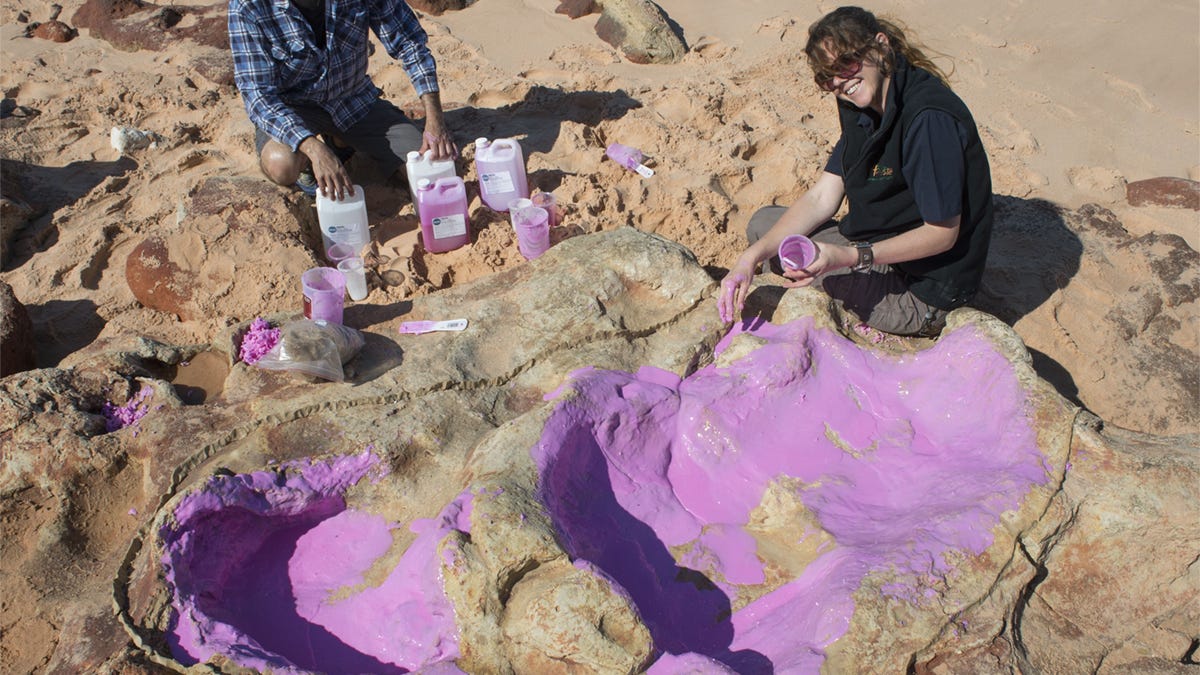The world's biggest dino prints are probably bigger than you
The newly discovered dinosaur footprints in Australia are the biggest yet -- and they'll be hard to beat at the length of a fully grown man.
Australia is the newly discovered home of the largest dinosaur prints ever discovered. Found in the Broome Sandstone rock formation of Walmadany, Western Australia, the prints measure a whopping 1.7 metres (about 5.5 feet) in length -- around the height of Napoleon Bonaparte.
Previously, the largest dinosaur footprints ever discovered were in France, near Lyon, coming in at 1.5 metres (4.9 feet). Both sets of prints are from the same type of beast, however -- a group of dinosaurs called sauropods, long-necked herbivores that include brontosaurus, diplodocus and apatosaurus.
The 25-kilometre stretch of coastline on which the prints were discovered is remarkable in more than one way, though. The area now being called "Australia's Jurassic Park" has yielded up an "unprecedented" 21 different types of dinosaur prints, including the only confirmed evidence of stegosaurs in Australia, as detailed in a paper published in the Journal of Vertebrate Palaeontology.
This makes the area the most diverse for dinosaur footprints in the world.
"We've got several tracks up in that area that are about 1.7 metres long. Most people would be able to fit inside tracks that big, and they indicate animals that are probably around 5.3 to 5.5 metres [high] at the hip, which is enormous," lead author Steve Salisbury of the University of Queensland told the ABC.
"At first it would seem a footprint that size and an animal that big, is it scientifically possible? These animals did exist. They were out there and we're seeing evidence of them having existed in the Kimberley [region] 130 million years ago based on these tracks."
Salisbury and his team started investigating the region after it was selected by the Western Australian government as the site for a liquid natural gas processing plant in 2008. The traditional custodians of the area, the Goolarabooloo people, contacted Salisbury to investigate.
The team spent over 400 hours documenting the tracks, and the area was granted a National Heritage listing in 2011.
"There are thousands of tracks around Walmadany. Of these, 150 can confidently be assigned to 21 specific track types, representing four main groups of dinosaurs," Salisbury said in a statement.
"There were five different types of predatory dinosaur tracks, at least six types of tracks from long-necked herbivorous sauropods, four types of tracks from two-legged herbivorous ornithopods, and six types of tracks from armoured dinosaurs."
Special Reports: All of CNET's most in-depth features in one easy spot.
It's Complicated: This is dating in the age of apps. Having fun yet? These stories get to the heart of the matter.


